Related Research Articles

Harland & Wolff is a Northern Irish shipbuilding company based in Belfast, Northern Ireland. It specialises in ship repair, shipbuilding and offshore construction. Harland & Wolff is famous for having built the majority of the ocean liners for the White Star Line, including Olympic-class trio – RMS Olympic, RMS Titanic and HMHS Britannic. Outside of White Star Line, other ships that have been built include the Royal Navy's HMS Belfast; Royal Mail Line's Andes; Shaw, Savill & Albion's Southern Cross; Union-Castle's RMS Pendennis Castle; P&O's Canberra; and Hamburg-America's SS Amerika of 1905. Harland and Wolff's official history, Shipbuilders to the World, was published in 1986.
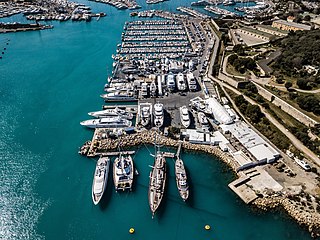
A shipyard, also called a dockyard or boatyard, is a place where ships are built and repaired. These can be yachts, military vessels, cruise liners or other cargo or passenger ships. Compared to shipyards, which are sometimes more involved with original construction, dockyards are sometimes more linked with maintenance and basing activities. The terms are routinely used interchangeably, in part because the evolution of dockyards and shipyards has often caused them to change or merge roles.
Cammell Laird is a British shipbuilding company. It was formed from the merger of Laird Brothers of Birkenhead and Johnson Cammell & Co of Sheffield at the turn of the twentieth century. The company also built railway rolling stock until 1929, when that side of the business was separated and became part of the Metropolitan-Cammell Carriage & Wagon Company.
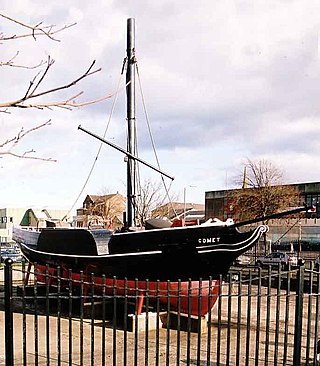
The PSComet was built in 1812 for Henry Bell, hotel and baths owner in Helensburgh, and began a passenger service on 15 August 1812 on the River Clyde between Glasgow and Greenock that was the first commercially successful steamboat service in Europe.
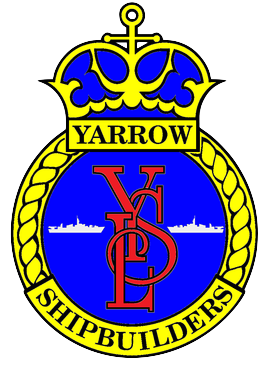
Yarrow Shipbuilders Limited (YSL), often styled as simply Yarrows, was a major shipbuilding firm based in the Scotstoun district of Glasgow on the River Clyde. It is now part of BAE Systems Surface Ships, owned by BAE Systems, which has also operated the nearby Govan shipyard since 1999.

The Fairfield Shipbuilding and Engineering Company, Limited was a Scottish shipbuilding company in the Govan area on the Clyde in Glasgow. Fairfields, as it is often known, was a major warship builder, turning out many vessels for the Royal Navy and other navies through the First World War and the Second World War. It also built many transatlantic liners, including record-breaking ships for the Cunard Line and Canadian Pacific, such as the Blue Riband-winning sisters RMS Campania and RMS Lucania. At the other end of the scale, Fairfields built fast cross-channel mail steamers and ferries for locations around the world. These included ships for the Bosporus crossing in Istanbul and some of the early ships used by Thomas Cook for developing tourism on the River Nile.

Bowling is a village in West Dunbartonshire, Scotland, with a population of 740 (2015).

John Laird was a British shipbuilder and key figure in the development of the town of Birkenhead. He was the elder brother of Macgregor Laird. He was one of the first to use iron in the construction of ships.

The Dee Why and Curl Curl, were two identical steam ferries servicing Sydney Harbour's Circular Quay to Manly service. Both commissioned in 1928, they were the largest ferries on Sydney Harbour until the 1938 introduction of the South Steyne.

Ailsa Shipbuilding Company was a Scottish shipbuilding company based in Troon and Ayr, Ayrshire.

William Denny and Brothers Limited, often referred to simply as Denny, was a Scottish shipbuilding company.

A & J Inglis, Ltd, was a shipbuilding firm founded by Anthony Inglis and his brother John, engineers and shipbuilders in Glasgow, Scotland in 1862. The firm built over 500 ships in a period of just over 100 years. Their Pointhouse Shipyard was at the confluence of the rivers Clyde and Kelvin. They constructed a wide range of ships, including Clyde steamers, paddle steamers and small ocean liners. In wartime, they built small warships, and in the period after World War II, they built a number of whalers.

Robert Napier was a Scottish marine engineer known for his contributions to Clyde shipbuilding.

The Blyth Shipbuilding & Dry Docks Company Ltd. was a British shipyard located in Blyth, Northumberland, England.
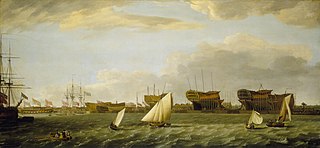
Blackwall Yard is a small body of water that used to be a shipyard on the River Thames in Blackwall, engaged in ship building and later ship repairs for over 350 years. The yard closed in 1987.
Bow, McLachlan and Company was a Scottish marine engineering and shipbuilding company that traded between 1872 and 1932.

PS Sandown was a passenger vessel built for the Southern Railway in 1934 and later served with distinction in the Royal Navy during the Second World War.
Henry Melvill Napier was a Scottish rugby union international who represented Scotland in the 1876–77 Home Nations rugby union matches, 1877–78 Home Nations rugby union matches, 1878–79 Home Nations rugby union matches and 1879–80 Home Nations rugby union matches. Napier was also a noted engineer and shipbuilder.
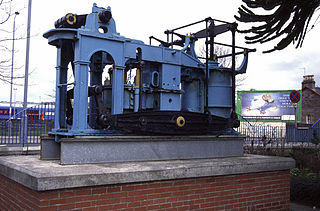
Messrs Robert Napier and Sons was a famous firm of Clyde shipbuilders and marine engineers at Govan, Glasgow founded by Robert Napier in 1826. It was moved to Govan for more space in 1841. His sons James and John were taken into partnership in 1853.

PS Eagle III was a passenger-carrying paddle steamer that was built and sailed on the Clyde, and was twice requisitioned by the Admiralty to serve as a minesweeper during the world wars.
References
- ↑ "Napier, Shanks and Bell". gracesguide.co.uk. 2012. Retrieved 11 August 2012.
- 1 2 "Napier and Miller". gracesguide.co.uk. 2012. Retrieved 11 August 2012.
- ↑ "Royal Aircraft Factory: B.E.2". gracesguide.co.uk. 2012. Retrieved 11 August 2012.
- ↑ Paterson, Alan J. S. (1982). Classic Scottish Paddle Steamers. David & Charles. ISBN 0-7153-8335-3.
- ↑ "SS Dee Why". Clydebuilt Ships Database. 2012. Archived from the original on 19 December 2011. Retrieved 9 August 2012.
{{cite web}}: CS1 maint: unfit URL (link)